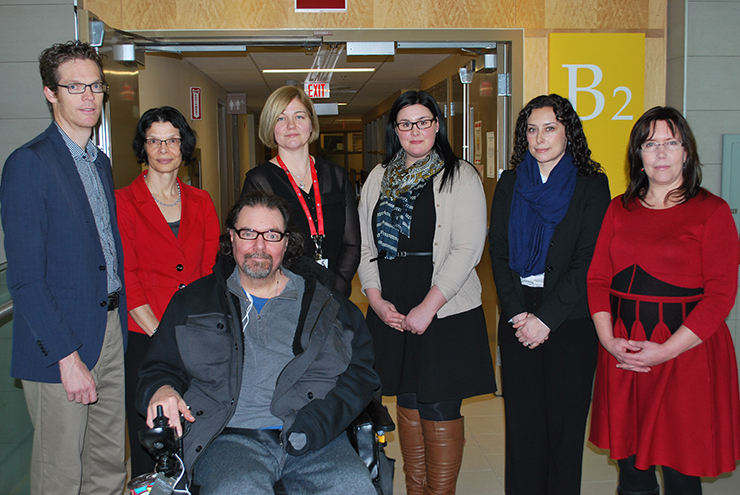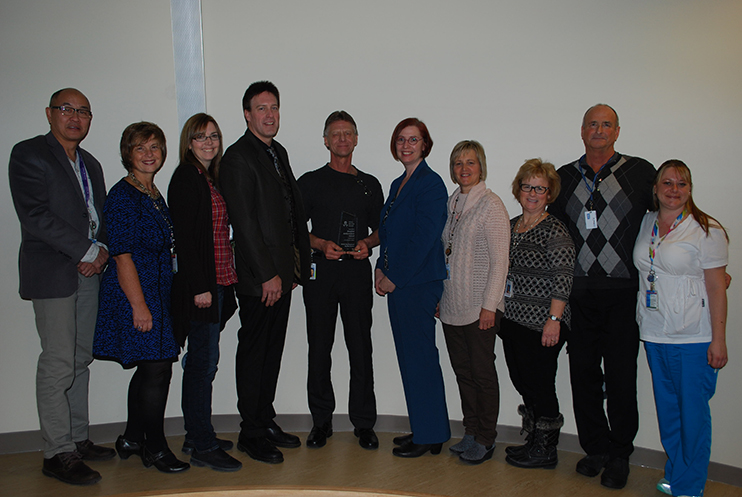A program designed to help people adjust to everyday life after a stroke is showing positive results, according to a new study.
The study was led by the Northeastern Ontario Stroke Network, a program funded by the North East Local Health Integration Network (NE LHIN), and the School of Nursing at Laurentian University.
Between 2012-2015, a research project was completed that studied the post-stroke community navigation services. The three-phase study involved over 250 participants (including over 100 people who’ve had a stroke).
A Community Navigator works with people who’ve had a stroke and their caregivers to help them adjust to life back in the community. A navigator helps clients access community resources, develops personalized recovery plans and evaluates a client’s progress.
Researchers tracked people who used the services of a Community Navigator once they were discharged from hospital, and compared their results to similar, former patients who did not use the services of a navigator.
According to the study, stroke patients who opted for navigation recorded a significant improvement in their Return to Normal Living Index (RNLI) scores six to twelve weeks after their discharge from hospital. People using a navigator also reported the service benefitted their overall sense of well-being.
The study also revealed that during the first three months following a stroke, the group of individuals who used navigation services and experienced an improved Return to Normal Living Index score were older and had more health conditions than their peers who did not use the navigation service.
The Stroke Community Navigator service was launched in Greater Sudbury in 2011. The service has since expanded to North Bay, Sault Ste. Marie, Timmins, Temiskaming Shores and Parry Sound, through $1.2 million in funding from the NE LHIN. The funding was provided to the Northern Ontario Independent Living Association (NILA), which works in partnership with ICAN to administer the Post-Stroke Transitional Care Program.
The Post-Stroke Transitional Care Program includes both a stroke navigator and support services delivered by NILA and their partners, which includes PHARA, ICAN, Ontario March of Dimes, The Friends, and Timiskaming Home Support.
QUOTES
“We conducted this study so we would have a better understanding of what types of patients were utilizing the services of a Community Navigator, “says Darren Jermyn, Regional Coordinator of the Northeastern Ontario Stroke Network and co-principal investigator of the study. “ We also wanted to know what impact the service was having on a patient’s return to their community and their overall well-being.”
“After a stroke, people share common physical, emotional, occupational, social, and financial needs, but their individual circumstances require unique strategies to meet those needs,” adds Phyllis Montgomery, a Professor in the School of Nursing at Laurentian University and co-principal investigator of the study. “We wanted to gauge how well the community navigation service was meeting those needs, and from what we can tell, it’s working quite well. Stroke navigation services are a viable option for supporting well-being and overall functioning of individuals following hospital discharge after a stroke.”
“The landscape is a treacherous one that both my wife and I have travelled as survivor, caregiver and spouse. The experience of reintegration with the aid of Stroke Navigation was, for us, a breath of fresh air. We had a large group of caring and knowledgeable people in our corner, working on our behalf,” says Philip McCoy, one of the clients in the Post Stroke Transitional Care Program.
“As a LHIN we have been investing in ways to improve the transitions of care for Northerners, as well as helping people better navigate the health care system,” says Louise Paquette, CEO of the North East LHIN. “Northerners have told us that they need these ‘warm hand-offs’ to move from services delivered in hospital to services delivered in home. This study confirms that our stroke navigators are making a difference in people’s lives.”
“AT ICAN and our other NILA partner sites like PHARA, it has been very rewarding to work alongside people who have had a stroke, their families, and dedicated care providers”, says Rebecca Bowes, Regional Coordinator of the Post-Stroke Transitional Care Program. “Additional funding from the NE LHIN has allowed this program to help more people who’ve had a stroke so they can stay closer to home and continue their recovery. It’s also easing the strain of finding the right care at the right time and improving the chances for the highest quality of life. I’m glad to see that the research has validated what we do.”
-30-

(L-R) Darren Jermyn, Study Co-Principal Investigator, Reg. Dir., NE Ontario Stroke Network; Phyllis Montgomery, Co-Principal Investigator, Professor, School of Nursing, Laurentian University; Philip McCoy, Client, Post Stroke Transitional Care Program; Shelley Hawton, District Stroke Coordinator, NBRHC; Brianna Topham, Stroke Community Navigator, P.H.A.R.A.; Rebecca Bowes, Regional Coordinator, Post-Stroke Transitional Care Program; Lise Anne Boissonneault, North East Local Health Integration Network.
Contacts:
Lindsay Smylie Smith
Communications Specialist
North Bay Regional Health Centre
705-474-8600 ext. 7592 or 705-492-1235 (cell)
Lindsay.smyliesmith@nbrhc.on.ca
Joanne Musico
Director, Communications,
Laurentian University
Tel: 705-675-1151 ext. 3445 or 1.800.263.4188 ext. 3445
jmusico@laurentian.ca
Rebecca Bowes
Regional Coordinator,
Post Stroke Transitional Care Program ICAN
705-673-0655, ext. 203
rbowes@ican-cerd.com
Lara Bradley
Communications Officer North East LHIN
705-674-1492
705-207-1259 (mobile)
Lara.Bradley@lhins.on.ca







